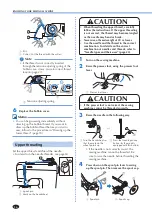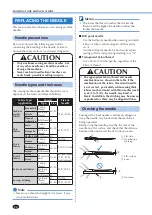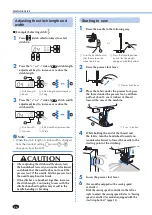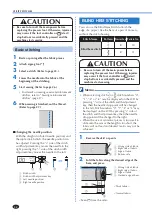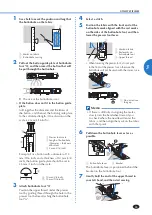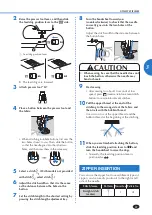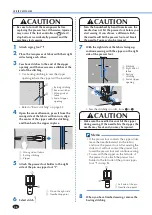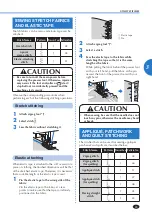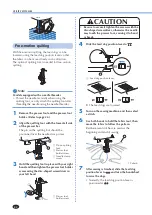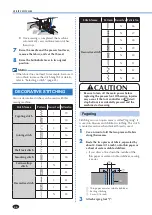
SEWING BASICS
30
Make sure that the needle passes through the hook-
and-loop fastener tape by turning the handwheel and
lower the needle into the hook-and-loop fastener
tape before sewing. And then, sew the edge of the
hook-and-loop fastener tape at a slow speed.
If the needle does not pass through the hook-and-
loop fastener tape, replace the needle with the
needle for thick fabrics (page 20).
1
Edge of the hook-and-loop fastener tape
Sewing thin fabrics
When sewing thin fabrics, the stitching may become
misaligned or the fabric may not feed correctly.
Move the needle (be sure to use a fine needle) to the
furthest left or right hand position so that the fabric
does not get pulled down into the feed dog area. If
you have finished sewing, tear off any excess
paper.
1
Stabilizer material or paper
Sewing stretch fabrics
First, baste the pieces of fabric together, and then
sew without stretching the fabric.
1
Basting
Stitching cylindrical pieces
Removing the flat bed attachment makes it easier to
sew cylindrical pieces such as cuffs and pant legs, or
hard-to-reach areas.
1
Pull the flat bed attachment to the left to
release it.
<Slide type flat bed attachment>
1
Flat bed attachment
<Open type flat bed attachment>
1
Flat bed attachment
X
With the flat bed attachment removed, free-
arm sewing is possible.
• When sewing cylindrical pieces, follow the
next step.
Note
• When you are finished with free-arm
sewing, install the flat bed attachment back
in its original position.
2
Slide the part that you wish to sew onto the
arm, and then sew from the top.

